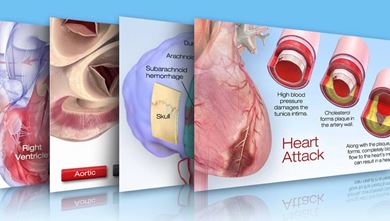Symptoms, Diagnosis and Monitoring of Diabetes

Overall, 29.3 million adults in the United States have been diagnosed Type 2 diabetes — and more than 9 million more don’t know they have it. Though symptoms of Type 1 diabetes may not always be obvious and the onset of the disease is often gradual, once symptoms become severe, hospitalization is required.
Both of these facts speak to a larger truth: Left untreated, diabetes can cause many health problems. That’s why it’s crucial to know the warning signs and to see a health care professional regularly for routine wellness screenings.
Symptoms
Prediabetes has no symptoms.
Those with Type 1 or Type 2 diabetes also may have no symptoms — or such mild symptoms that they go unnoticed for a long time.
But since some people experience diabetes warning signs, it’s important to know the symptoms below:
- Excessive thirst
- Weight loss
- Urinate several times a day, often at night
- Increased appetite
- Blurry vision
- Tiredness
- Numbness or tingling of hands or feet
- Slow wound healing
- Frequent infections
- Dry skin
When blood sugar is extremely high these added symptoms may occur:
- Nausea
- Vomiting
- Abdominal pain
- Fruity odor on the breath
- Confusion
- Disorientation
- Drowsiness
- Coma
- Seizures
If you have any of these symptoms, see a health care professional right away for a checkup and proper diagnosis.
Who should be tested for prediabetes and diabetes?
You should be tested for diabetes if you:
- Are over age 45
- Are overweight or obese
- Are a Black American, Asian American, Latino/Hispanic American, Native American or of Pacific Islander
- Have a history of gestational diabetes (diabetes during pregnancy) or delivering a baby more than nine pounds
- Have a family history of diabetes
- Have a sedentary lifestyle
- Have any of the following conditions:
- High blood pressure
- High cholesterol
- Fatty liver disease
- Cardiovascular disease
- HIV
- Polycystic ovary syndrome
If your blood glucose levels are normal, you should be tested about every three years. If you have prediabetes, you should be checked for diabetes every one to two years after that diagnosis.
Tests for diagnosing prediabetes and diabetes
Three tests can help health care professionals diagnose prediabetes and diabetes:
HbA1C (A1C or glycosylated hemoglobin test)
The A1C test can diagnose prediabetes and diabetes. It measures your average blood glucose control for the past two to three months. Blood sugar is measured by the amount of glycosylated hemoglobin (A1C) in your blood. This test is more convenient because no fasting is required.
An A1C of 5.7% to 6.4% means that you have prediabetes, and you’re at high risk for developing diabetes. Diabetes is diagnosed when the A1C is 6.5% or higher.
Fasting Plasma Glucose Test (FPG)
A blood glucose test measures the amount of glucose (sugar) in your blood. A fasting plasma glucose test requires having nothing to eat or drink except water for eight hours before the test. You will have your blood drawn for this test. Blood glucose is measured in milligrams per deciliter (mg/dL).
This chart contains the FPG test’s blood glucose ranges for prediabetes and diabetes, and describes what each diagnosis means:
| Blood Glucose Range | Diagnosis | What It Means |
| Less than 100 mg/dl | Normal | Blood glucose levels are in the normal range. |
| 100 to 125 mg/dL | Prediabetes (also called impaired fasting glucose) | Blood glucose levels are higher than normal, but not high enough to be diagnosed as diabetes. This condition increases risk for developing Type 2 diabetes, heart disease and stroke. |
| 126 mg/dL or more | Diabetes mellitus | Diabetes develops when your body doesn’t make enough insulin or develops “insulin resistance” and can't efficiently use the insulin it makes. It greatly increases your risk of heart disease and stroke. |
Oral Glucose Tolerance Test
This test measures how well the body handles a standard amount of glucose.
To do this test, you will have nothing to eat or drink, except water, for at least eight hours. Your health care professional will draw blood, and then you will drink a beverage containing glucose. Blood is drawn again 30 and 60 minutes later. The test may take three hours. Then, your health care professional will compare the before-and-after glucose levels contained in your plasma to see how well your body processed the sugar. These levels are measured in mg/dL.
The chart below contains the ranges of the two-hour oral glucose tolerance test, which is used to diagnose diabetes.
| Blood Glucose Range | Diagnosis | What It Means |
| Less than 140 mg/dl | Normal | Blood glucose levels are in the normal range. |
| 140 to 199 mg/dL | Prediabetes | Blood glucose levels are higher than normal, but not high enough to be diagnosed as diabetes. This condition increases risk for developing Type 2 diabetes, heart disease and stroke. |
| 200 mg/dL or higher | Diabetes mellitus (Type 2 diabetes) | Type 2 diabetes develops when your body doesn’t make enough insulin or develops “insulin resistance” and can’t efficiently use the insulin it makes. It greatly increases your risk of heart disease and stroke. |
Tests for Monitoring Diabetes
If you’re diagnosed with diabetes, you can monitor your blood sugar level several ways to see how well your treatment plan is working:
HbA1C
Your health care team will do an HbA1C test at least twice a year.
Home monitoring
Easy-to-use home monitors allow people to test their blood sugar on their own. A variety of these devices are available.
If you’re managing diabetes with the help of a home monitor, talk to your health care professional to learn what to do when your results are too high or low.
Tests to measure heart health
People with diabetes are at increased risk for a range of health complications, including cardiovascular disease.
Learn more about tests that may be used to check your heart health.






